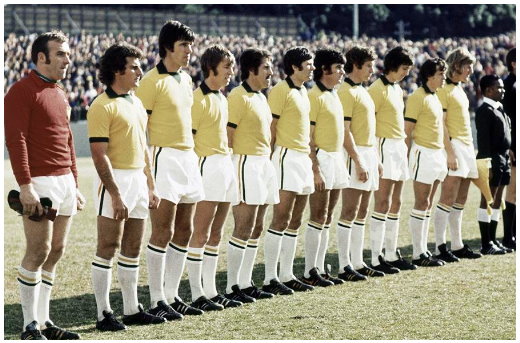 |
AUSTRALIA vs IRAN in Sydney
Rasic's 22 man squad for
the Iran games didn't contain any major surprises, with the only real omissions being
Bobby Hogg, who had broken his leg in a club match, and Keeper Jack Reilly.
GOALKEEPERS: James Fraser, Jimmy Milisavljvic. |
|
Iran
made the mistake of visiting New Zealand on its way to Sydney. It was there, in a 1-1 draw
with Canterbury Province in Christchurch that Iran's star Ali Parvin suffered the injury
that keep him out of the World Cup match. Parvin limped of the ground with
blood streaming from a deep cut that required seven stitches just below the knee.
Australia played a practice match against the New South Wales under 23 team in Sydney. Rasic had his players playing in different positions because the Iranian Coach was watching the game. After the match the Iranian coach said that Iran would have no problems in booting the Socceroos out of the Tournament. Another of Rasic's ruses was to put photographs of every Iranian player on the wall of the training shed. He told to Socceroos to memorise the face of the player he would be marking or playing against. The first of the two matches was to be played in Sydney 1973 |
|
|
A crowd
of 30,881 people turned up at the Sydney Sports Ground on August 18 to watch the vital
match, refereed by Rudolf Scheurer of Switzerland. Many of the spectators were ethnic people who went to barrack for the Socceroos,
but the majority were Australian Anglo Saxons who more than ever before in the modern era,
were becoming conscious of the Australian National team. While Australia was battling it out with its Asian neighbours, Iran was doing the same thing against its Arab brethren Kuwait and Syria, and North Korea in Sub-Group B2. The winners of the two groups had to meet home and away for a place in the 1974 World Cup. Iran, with the population of 31 million, was fiercely fanatical about its football. If some of the experts in Sydney were expecting an easy path to the next stage, then the Iranians didn't quite see it that way. AUSTRALIA : Jim Fraser, Doug Utjesenovic, Peter Wilson, John Watkiss, Col Curran, John Warren, Ray Richards, Jim Mackay, Atti Abonyi, Ray Baartz, Adrian Alston (Billy Vojtek 75') IRAN : Nasser Hejazi, Mehdi Monajati, Gholamhossein Mazloumi, Ebrahim Ashtiani, Jafar Kashani, Akbar Kargarjam, Reza Adelkhani, Javad Ghorab, Parviz Ghelichkhani, Esmail Hajrahimipur (Safar Iranpak 23' (Mohammed Sadeghi 46')), Mehdi Lavasani |
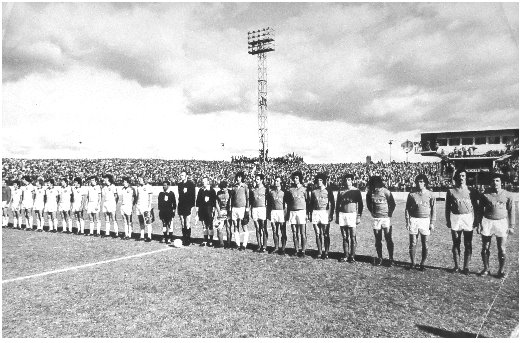 |
|
Atti Abonyi electrified
the large crowd. In one of his finest periods of international football, Abonyi celebrated
his 27th birthday two days ago, by tying the Iranian defence in knots and shooting at
every opportunity. Australia’s midfield trio of John Warren, Ray Richards
and Jim Mackay was disappointing. Richards said afterwards: “It was not one of my
best games, I could have done much better. After a few minutes of
holding the ball in its own ranks, the final whistle sounded. The game was over. Winning
the first leg by three goals was a great success but it really should have been a greater
margin.
|
|
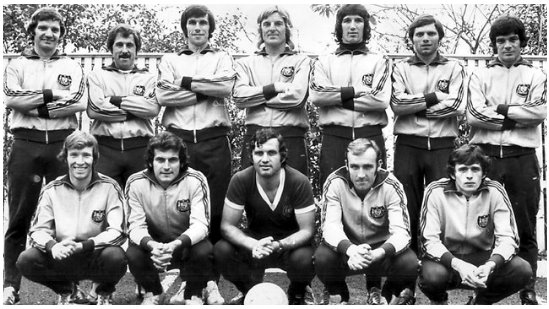 |
|
|
|
|
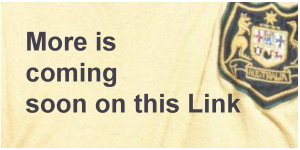
 |
André Krüger™
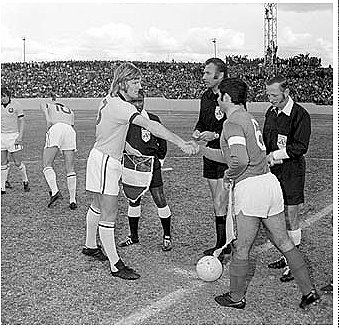 AUSTRALIA - IRAN
AUSTRALIA - IRAN Iran’s Sadeghi came
on at half time for Irinpak who had broken his leg after replacing another casualty,
Rahminipour.Within seconds of the second half re-start, Abonyi
put his country two up after a Baartz pass. Abonyi ran from mid-pitch, chased by his
opponent. But the St.George forward was too speedy.
Iran’s Sadeghi came
on at half time for Irinpak who had broken his leg after replacing another casualty,
Rahminipour.Within seconds of the second half re-start, Abonyi
put his country two up after a Baartz pass. Abonyi ran from mid-pitch, chased by his
opponent. But the St.George forward was too speedy.